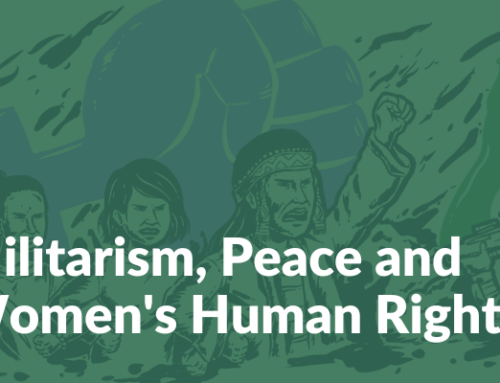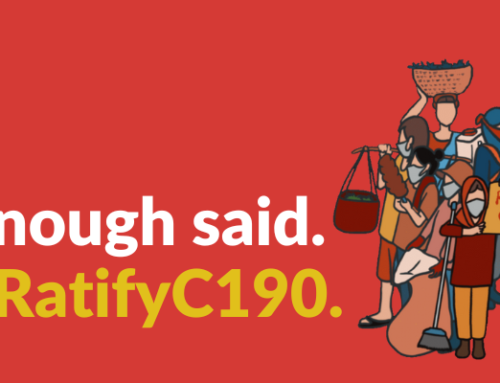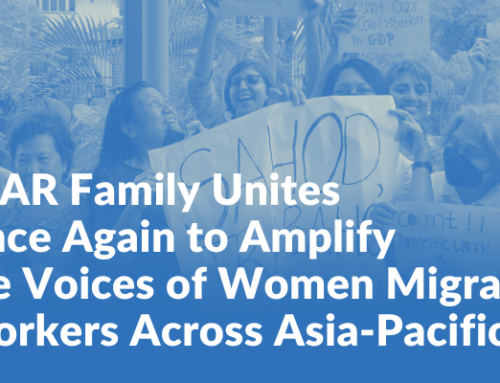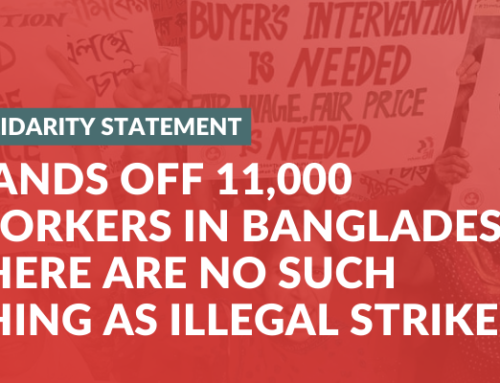Precarious work means work where your labour rights are not secure. It could mean that you are not covered by a direct and secure employment contract with the company or organisation who is benefiting from your labour and you are not protected by the national labour laws. It could mean that you are a casual or seasonal employee who might, or might not, get work. This means anything ranging from outsourced workers, part-time, independent contractor, seasonal workers, sub-contracted workers to on-the-job trainee.
Labour agencies are often involved in supplying workers to the companies and often obscure the employment relationship. Under this type of employment, employers do not have obligation to provide social protection, benefits, occupational health and safety as well as decent wages as required by regulations. Precarious workers often have no legal way to make the person, company or organisation ultimately profiting from their labour responsible.
1. It’s a major employment trend in the world
After financial crisis in 2008, precarious form of employment has increased drastically around the world. As of 2015, only a quarter of the world’s workers are on permanent contract, while the rest are on temporary work, part-time, or self-employed. It is a global shift that has moved away from standard employment to insecure jobs.
Nowadays precarious workers are used across industries, even big organisations or institutions, including NGOs. Flexibilisation and precarious work feeds on the exploitation of migrant labor. In Asia, precarious work is the norm. About 62%, 65% and 73% of all employed workers in Thailand, Indonesia and Vietnam are in precarious work. In Malaysia, it’s one in four, while in the Philippines, 75% of those with jobs are informally employed.
2. It disproportionately affects women
Women and youth are predominant in precarious work, often occupying the most dangerous and lowest paid jobs.That means women workers take extra hit when there is no job security or social benefits, for example the lack of maternity leave or holiday leave. Often, precarious women workers get asked to leave when they are found to be pregnant especially those in entertainment or service sectors. Studies also show that precarious workers face higher risks of health and safety risks than direct workers.
Women make up the majority of short-term and part-time contract, partly due to the burden of care and the sexual division of labour that treats women as the ‘cushion’ for neoliberalism. While labour participation for women have increased in Asia, it does not translate to better quality of jobs. Precarious work is a major factor contributing to the enormous wage gaps between men and women. In Japan, part-time women workers earn only 54% of their full-time counterparts, while in South Korea, 70% of women workers are precariously employed and earn 43% less than their male, salaried counterparts. Workers in precarious work are three times more likely to live in extreme poverty than waged and salaried workers.
3. It’s all about increasing profits and CEOs’ salaries
Precarious work has been growing since the 1980s when corporations realised that a global supply chain of precarious workers is both cheaper and can protect them from regulations and responsibility. It quickly began to return more profits to shareholders and to the salaries of CEOs and executives. International financial institutions like the World Bank and IMF also promoted these policies as part of the neoliberal agenda. Precarious work is one of the main causes of the widening, obscene levels of wealth inequality and the growing gap between wages and profits.
In recent years, governments in Asia have introduced many laws that would allow companies to employ workers with more flexibility and less security. In the Philippines, where contractualisation is already rampant, the government is trying to legalize 12-hour work day for 4 days a week, without overtime pay. Other flexible arrangement like changing holidays into different days to avoid paying holiday pay.
4. It is destroying labour unions and labour organising
Precarious work has been one of the ways to break union power and organising. When your job is precarious workers fear losing their job. When you work as a ‘contractor’ you usually can’t unionise. And precarious work also destroys solidarity among workers by dividing workers into “the regulars” and “the contractuals.” Union busting companies use labour hire companies or outsource to non-unionised workplaces to destroy unions and their collective bargaining power.
5. It can be overcome with strong union organising with industrial and global level action
In South Korea, irregular women workers in public schools had a nationwide walkout in June 2017 to advance their demands for job security and social benefits. Currently, 40% of public school workers in South Korea are on temporary contracts, while the gender wage gap is currently the biggest in OECD countries. The strike resulted in an agreement with the Seoul metropolitan authorities that guaranteed job security for irregular employees and their right to collectively bargain with the education ministry directly at the national level.
Unions around the world are addressing this issue by reaching out to organise contract workers and include them in industrial or workplace level collective bargaining agreements. We must demand our governments end precarious employment and ensure all workers are entitled to living wages, paid leave, set hours and overtime, social protection, training opportunities, safe working conditions and the right to unionise, bargain and strike.
Join us for the global action day against precarious work and demand Decent Work on 7th October!





